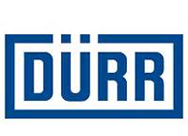





Your hospital or surgery center will contact you with specific details about your appointment. You will likely be asked to arrive at the hospital an hour or two before your surgery. Do not eat or drink anything after midnight the night before your surgery.
When you first arrive for surgery, a member of the anesthesia team will talk with you. Arthroscopy can be performed under local, regional, or general anesthesia.
The anesthesiologist will help you decide which method would be best for you. If you have local or regional anesthesia, you may be able to watch the procedure on a television monitor.
The orthopaedic surgeon will make a few small incisions in your knee. A sterile solution will be used to fill the knee joint and rinse away any cloudy fluid. This helps your orthopaedic surgeon see your knee clearly and in great detail. Your surgeon’s first task is to properly diagnose your problem. He or she will insert the arthroscope and use the image projected on the screen to guide it. If surgical treatment is needed, your surgeon will insert tiny instruments through another small incision. These instruments might be scissors, motorized shavers, or lasers. This part of the procedure usually lasts 30 minutes to over an hour. How long fs-4 it takes depends upon the findings and the treatment necessary.
Your surgeon may close your incisions with a stitch or steri-strips (small bandaids) and cover them with a soft bandage.
You will be moved to the recovery room and should be able to go home within 1 or 2 hours. Be sure to have someone with you to drive you home.
Recovery from knee arthroscopy is much faster than recovery from traditional open knee surgery. Still, it is important to follow your orthopaedic surgeon’s instructions carefully after you return home. You should ask someone to check on you the first evening you are home.
Keep your leg elevated as much as possible for the first few days after surgery. Apply ice as recommended by your doctor to relieve swelling and pain.
You will leave the hospital with a dressing covering your knee. Keep your incisions clean and dry. Your surgeon will tell you when you can shower or bathe, and when you should change the dressing. Your surgeon will see you in the office a few days after surgery to check your progress, review the surgical findings, and begin your postoperative treatment program.
Most patients need crutches or other assistance after arthroscopic surgery. Your surgeon will tell you when it is safe to put weight on your foot and leg. If you have any questions about bearing weight, call your surgeon.
Your doctor will discuss with you when you may drive. This decision is based on a number of factors, including :
Typically, patients are able to drive from 1 to 3 weeks after the procedure.





